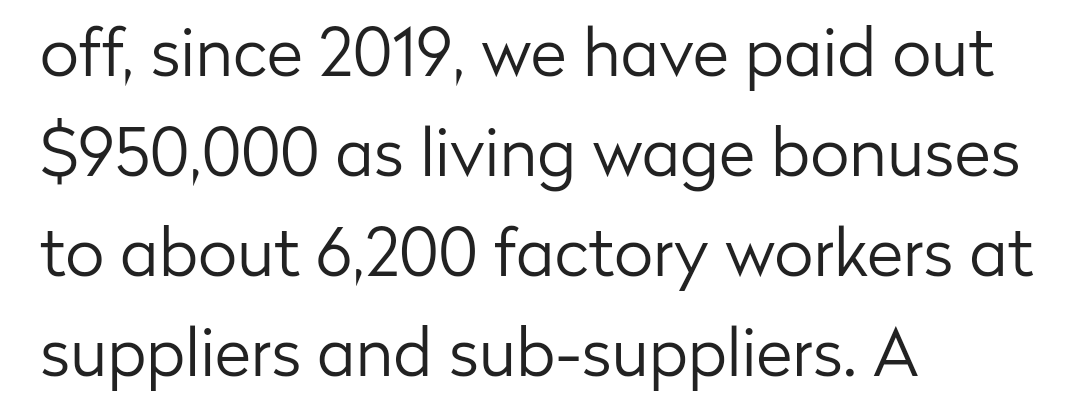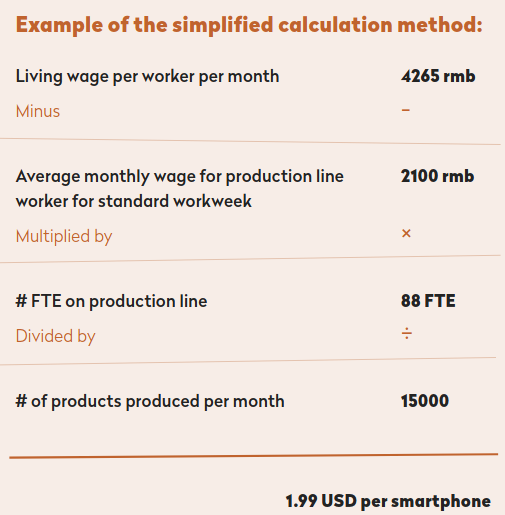tldr: more reading and actual numbers and calculations. The premium on the price of the phone ($1.20) to bridge the gap to living wage standard is much cheaper than I thought.
There actually is much more information in the article I linked above.
They say that for 8 hours/day, it’s $15/day (I have no clue if it’s 5 or 6 days/week, so from 315$ to 390$ a month) for a standard phone company.
They want to bridge the gap for the employees making Fairphone devices, so increase it to 21$/day (now maybe meaning around $500/month)
However, they say that they spread this bonus among all low-wage workers in the factory, not just the ones making fairphone (which I remember reading was the factory workers decision). So it only accounts for 15% of the gap to living wage for each.
They add that on the total price of the phone, this only makes up for a premium of about $1.20, which does make it seem ridiculous that other companies don’t do it too.
Although this last number seems really low to me, and makes me wonder if I’m not missing some info.
For example, how much does the assembly labor account for in the total labor needed to make the phone?
This would as well mean that the total assembly cost of the FP5 is 1.2×15/(21−15) = $3 and thus 7 phones can be assembled in 8 hours by one worker. To my surprise this seems to be the actual time needed.
My above calculation means 1 worker can make 25×21/(1.2×15/(21−15)) = 175 phones/month (21 worked days/month)
Page 14 of this report : https://www.fairphone.com/wp-content/uploads/2022/07/Fairphones-Guide-to-paying-living-wages-in-the-supply-chain.pdf (everything is in this report actually) there is a table showing 15000 phones/month / 88 workers = 170 phones/worker/month
Oh, and we now have the actual living wage salary/month: 4265 RMB so 607.66 USD.
Last note: they have a whole webpage on living wage: Living Wage - Fairphone, where I found the report above, and with a calculator to download for other companies to estimate the price premium needed to reach living wage standard for their own products (but the tool didn’t seem very useful to me to gather more info)
Anyway, I’m done for now, sorry for the wall of text 

